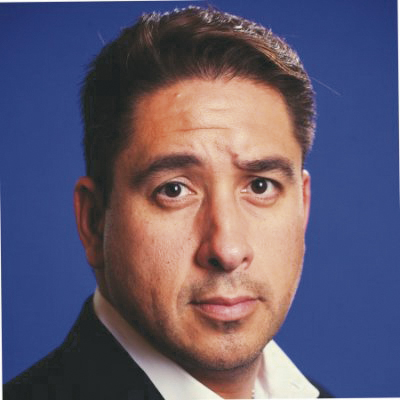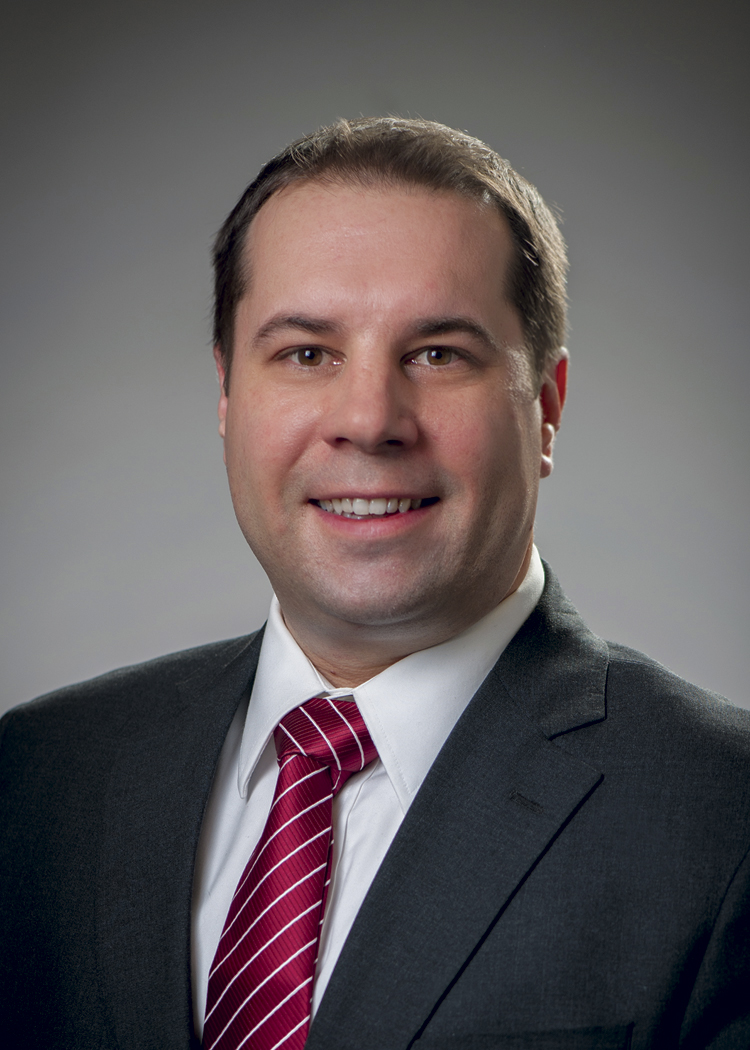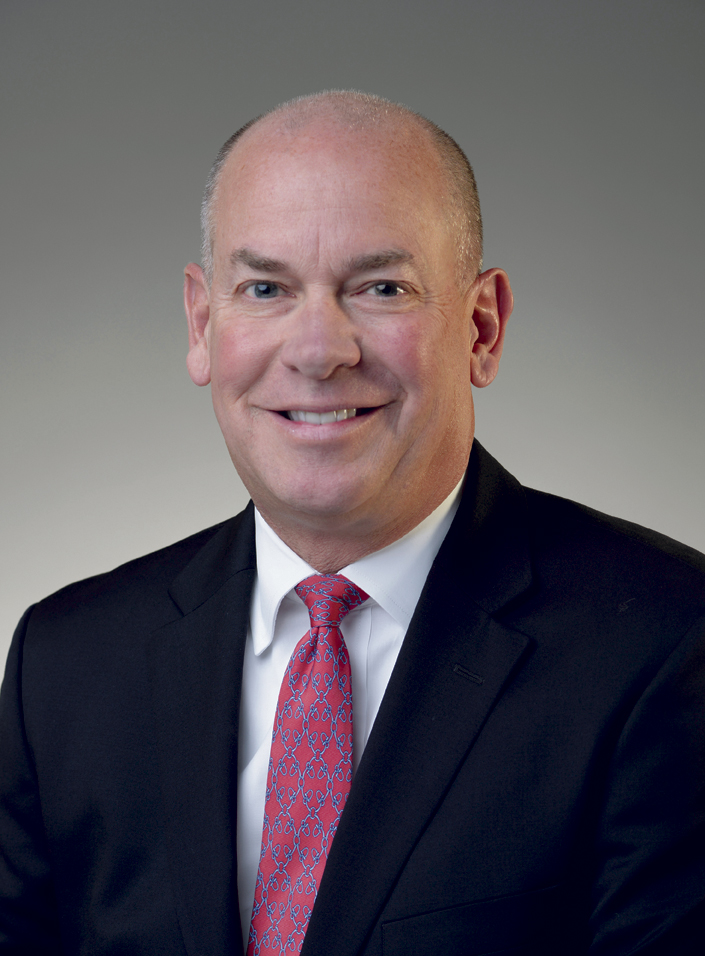VOLUNTARY ACCIDENT SHOWS STRENGTH
Insurers, plan sponsors and brokers find a lot to like
Voluntary benefit providers have been piling into the accident insurance market in the last several years, adding it to their existing product line-up—and for good reason. Accident insurance not only offers the appeal of other voluntary products in filling gaps created by high-deductible health plans, but it responds to a distinct risk that is readily grasped by plan participants.
“Accident has become a core benefit for many employers over the past few years,” says Bryan Burke, director of product management and development for Sun Life, which began offering voluntary accident insurance in 2011. “The market has grown significantly, with more carriers introducing their own products and offering the benefit to their in-force clients.

—Joe Quintana
Regional Practice Leader, Voluntary Benefits
Reliance Standard
“Our sales of accident have been growing steadily, with consistent double-digit, year-over-year growth in new sales premium,” he adds. “Our total accident premium increased by about $100 million from 2012 through 2016. About 22% of our plan participants purchase accident.”
The growth is driven, Burke says, by higher out-of-pocket medical expenses in concert with rising deductibles. “Consumers have become more aware of those costs and the availability of accident insurance.”
Amalgamated Life Insurance Company added accident insurance to its suite of voluntary products in 2016. “Our sales of accident insurance doubled in 2017, and we are on track to double that number again in 2018,” says John Thornton, executive vice president of sales and marketing.
Amalgamated Life uses a multi-channel approach to marketing accident insurance and other voluntary products to plan sponsors, including “a very strong broker network.” The 75-year-old company was started by the founder of the Amalgamated Clothing Workers of America.
Reliance Standard Life entered the voluntary accident market in 2012, and from 2014 through 2017, it has averaged 27% annual growth in sales for the product. Joe Quintana, regional practice leader, voluntary benefits, at Reliance Standard, says that among its plan sponsors who began offering the coverage in 2017, approximately 16% of their plan participants purchased the coverage.
He says Reliance Standard’s sales of accident insurance are “very similar to our sales of critical illness insurance, but accident is growing at a faster clip for us.”
Quintana characterizes accident insurance and hospital indemnity (which the company began offering just last year) as “coverages that feel more like medical and dental than life and disability. You want to make sure you have them to use them, not just in case you need them. That’s why they are ideally tied in concept and approach to high-deductible health plans.”
Thornton sees accident insurance as a good match for the benefit plan participants who make up Amalgamated’s customer base. “Our customers on the employee side are rank-and-file workers; an accident that prevents them from working would present a major financial crisis, whereas a more affluent individual may have other financial resources to tap into.”
He adds, “We are learning that this product is especially valued by employees with young families, as well as those individuals with an adventurous lifestyle where, perhaps, accidents are more likely to occur.”
Other accident insurance features with special appeal to plan participants are the option for coverage for family members, level premiums with no rate increases with age, and portability, Thornton says.

—Bryan Burke
Director of Product Management and Development
Sun Life
Aside from accident insurance, Amalgamated’s voluntary line-up includes critical illness, disability, accidental death and dismemberment, dental, hearing, legal, whole life, and identity theft and monitoring.
“Accident and critical illness are in high demand, and including them in our offerings demonstrates our commitment to meeting the needs of workers, while also serving as a market-responsive resource to their plan sponsors,” says Thornton.
Sun Life reports that about three quarters of its accident coverage is purchased on adults (61% employee only; 13% employee plus spouse). Coverage for the entire family is purchased by 16%, and 10% cover the employee plus child.
Although the term “accident” is commonly understood to mean a sudden, unexpected and unfortunate occurrence, accident insurance covers more than just the unexpected; it can be used for preventive medical care also. Sun Life and Reliance Standard Life both offer wellness benefits under their accident plans.
Sun Life’s wellness benefit can be used by any covered family member. Coverage can also be used for preventative screening exams, immunizations, sports physical exams, and diabetes screenings.
In fact, at Sun Life, wellness was the most frequent claim under its voluntary accident policy in 2016, with 33% of claims. Rounding out the top five in claims frequency for Sun Life were doctors’ visits (28%); emergency room visits (16%); fractures (7%) and medical appliances (3%).
Insurers in the voluntary accident market use strategies that include both in-person and digital approaches to providing product education and enrolling employees.
At Amalgamated Life, once an employer has agreed to offer the coverage, “we are given the opportunity to go directly to the worksite on scheduled employee benefit days and meet with plan participants,” says Thornton.
The Amalgamated benefit specialists answer employees’ questions and provide them with printed product information, including statistics demonstrating the need for this coverage, to take home and discuss with other family members. “These on-site meetings are one of our most effective ways to market to employees,” says Thornton.
“We also have a member section on our website where they can obtain product information, various forms and see answers to frequently asked questions.”
Burke says, “For plan sponsors without a benefit administration system, it’s important that the broker and employer be engaged in developing and executing an enrollment strategy. Benefits communication is essential to educate employees on the benefit available, including what is covered and what is not. We provide multiple forms of communications to create awareness and educate employees on their benefits.
“For many employees, a one-on-one, face-to-face meeting with a benefits expert is a great way to answer questions that apply to that person’s specific situation. If that is not possible, we look to conduct group meetings to explain the benefits and answer questions.”
Quintana describes the ideal enrollment scenario as “when accident is offered directly after major medical in the selection process and is communicated in conjunction with the core offering.” Burke agrees, saying, “Placement of the product on the enrollment platform is very important. Ideally, accident (and critical illness) are placed directly after the major medical selections.”

—John Thornton
Executive Vice President, Sales and Marketing
Amalgamated Life Insurance
As more carriers have entered the accident market, it’s logical to expect an increase in competitive differentiation in products and support. In the overall market, Burke points out, “We are seeing richer accident benefits, lower rates, and a focus on digitizing the customer experience and simplifying the administrative and enrollment process.”
He says marketing is changing in other ways, as well. “Accident carriers are creating combination products that include accident, critical illness and hospital indemnity. They also are developing unique strategies for target markets with unique benefits,” Burke notes.
Quintana mentions two other trends in the accident market. First, he says, “We are seeing brokers and employers positioning accident coverage as part of a strategy to cross-sell their property/casualty lines and coverages, such as workers comp.”
Also, he notes that some employers are experimenting with paying for accident insurance. “We have seen this as a strategy to provide an employee a ‘soft landing’ when the employer moves to a higher deductible plan.” He points out that some employers also are paying the premium for hospital indemnity.
Quintana says at his own company, Reliance Standard, “a strategy for critical illness this year and accident insurance (next year) is unbundling and optimizing the flexibility for a broker or policyholder to craft coverage that will be of the greatest relevance and value to the employees. Greater flexibility can mean greater confusion,” he points out. “The key is to provide expert counsel to and through the broker, who should be attuned to finding the greatest potential value for his or her client.”
Looking at the overall accident market, Thornton says providers are moving to make the member’s experience easier and more convenient, with access to information online. “Also, as with all voluntary benefits, the trend with accident is to better engage employees/plan members and provide more personalization in benefits.”
As for plan sponsors, he says, “They are looking for resources to serve as a total solution provider and to back up their insurance product with a more integrated, seamless service to help them better navigate the complex benefits landscape.
“Brokers see accident insurance as a way to help plan sponsors hold down their direct healthcare costs while better meeting the needs of their changing workforces,” says Thornton. “Those workforces include Baby Boomers and Generations X and Y—all with different goals and concerns when it comes to their financial protection and security. Brokers recognize the opportunities that the accident insurance market presents to them.”
For more information:
Amalgamated Life Insurance
www.amalgamatedlife.com
Reliance Standard
www.reliancestandard.com
Sun Life
www.sunlife.com
The author
Thomas A. McCoy, CLU, is an Indiana-based freelance insurance writer.





